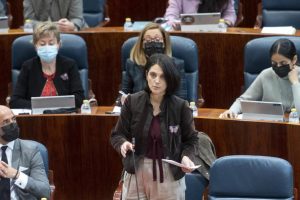
The US Federal Reserve strengthened its fight against inflation on Wednesday by raising the benchmark interest rate by a quarter point, to its highest level in 16 years. But at the same time, he said he could now pause the increases that have squeezed credit for businesses and consumers.
In a statement after their meeting, the US central bank said that while the banking system is “healthy and resilient”, turmoil in the sector could inhibit lending, spending and growth. He reiterated that the impact of a reduction in bank credit “remains uncertain.”
Interest rate hikes over the past 14 months have doubled mortgages and raised car loans, credit card rates and business loans, all of which have sparked fears of an impending recession. Home sales have plummeted.
The decision taken on Wednesday, which leaves the benchmark rate at 5.1%, could further increase borrowing costs.
However, the central bank’s efforts have been only partially successful in bringing down inflation that is the highest in four decades, and has further contributed to the collapse of three large banks. Those three banks had bought long-term bonds at very low rates, so they quickly lost value when the Fed raised rates.
Turmoil in the banking sector may have influenced the Federal Reserve’s decision to consider a pause. The institution’s head, Jerome Powell, had said in March that reducing bank lending in order to balance its financial balances could have the equivalent effect of a quarter point increase in rates, in terms of cooling the economy.
Fed economists have estimated that credit crunching in the wake of bank collapses could contribute to a “mild recession” this year, increasing pressure on the central bank to suspend rate hikes.
The Fed is now also dealing with a power struggle over the nation’s debt ceiling. Republicans in Congress are demanding deep cuts in public spending in exchange for accepting a debt ceiling increase.
The Fed’s decision comes against a backdrop of great uncertainty. The economy appears to be cooling off a bit – consumer spending was basically flat in February and March – indicating that many consumers have been wary of price and credit increases. Manufacturing is also weakening.
Even the labor market, which has remained remarkably robust despite everything, thanks to which the employment rate has held for months near 50-year lows, is starting to show cracks. Hiring has slowed, job openings are down, and fewer people have quit their jobs to take on better-paying ones.
Connect with the Voice of America! Subscribe to our channel Youtube and activate notifications, or follow us on social networks: Facebook, Twitter and instagram.










